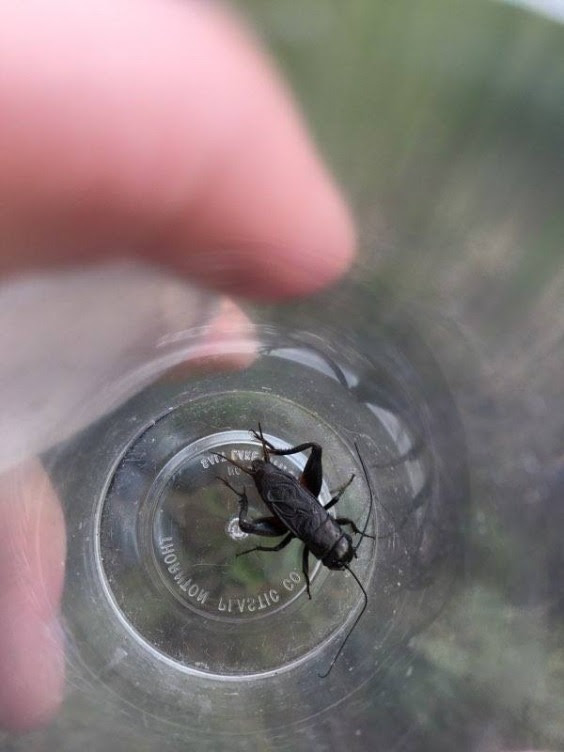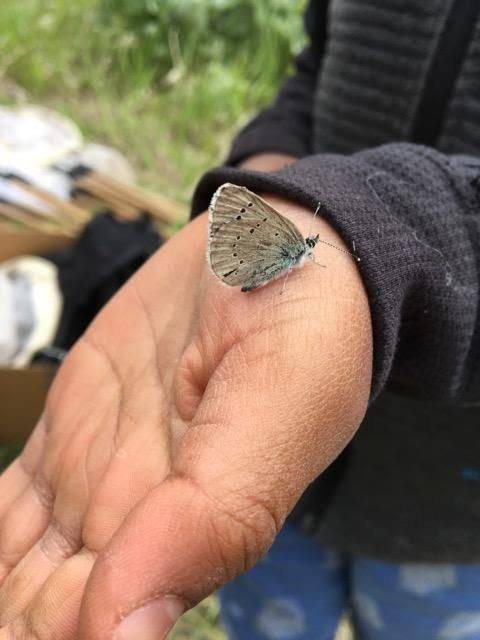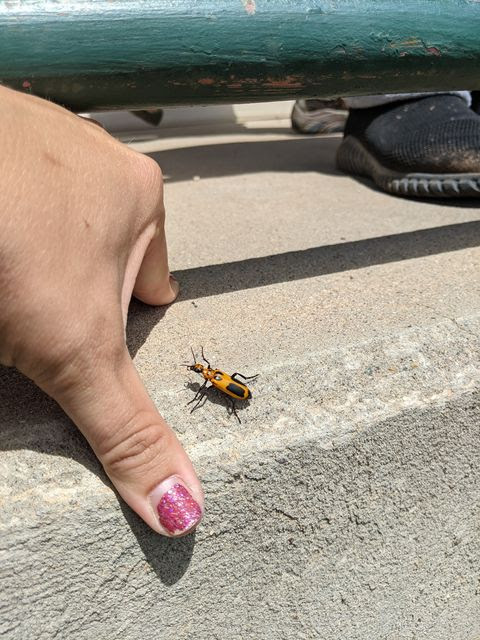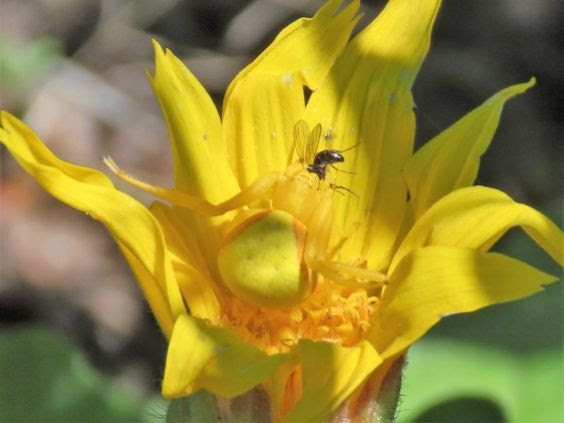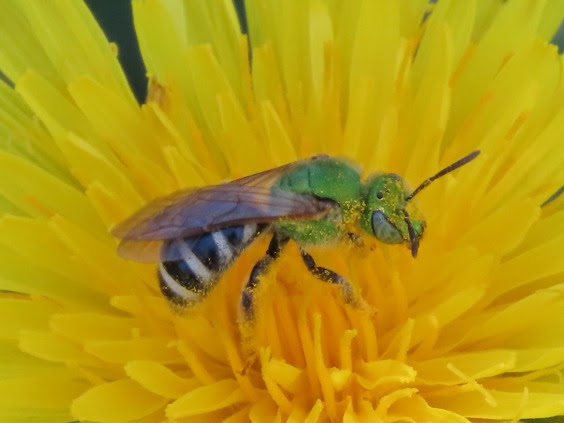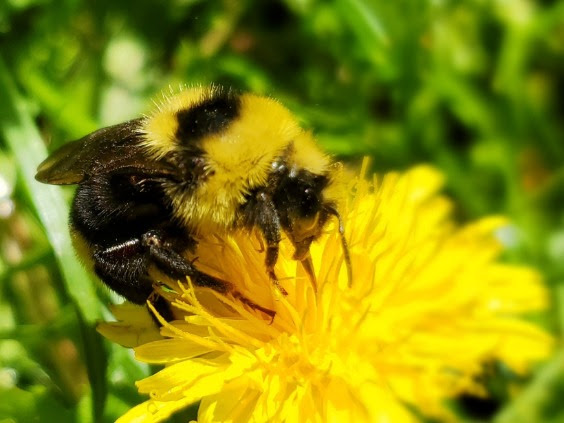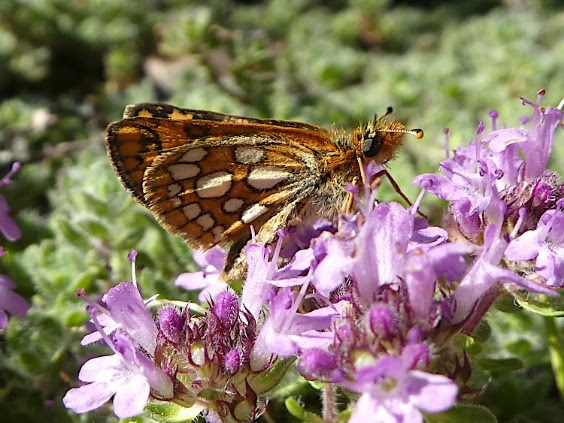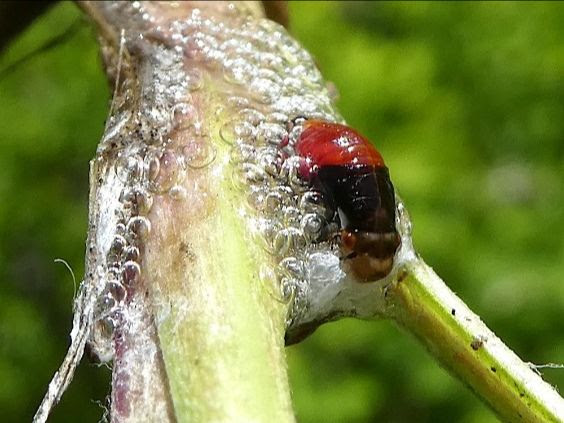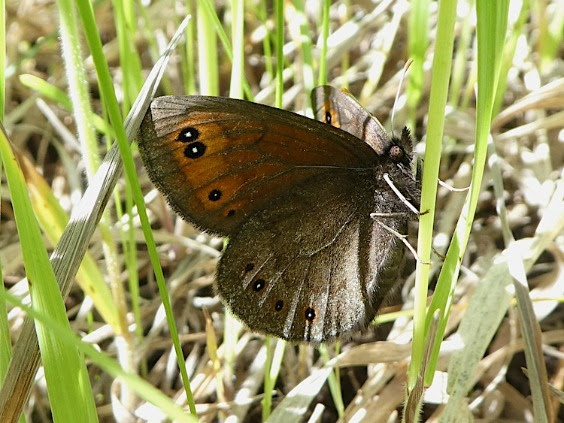Spring field crickets are the most common black cricket with a slowish chirp in the spring in many regions—ranging roughly through the northern half of the US. After overwintering as nymphs, […]
Read MoreWhat’s Buzzin’
What can you see around Western Montana right now?
Silvery Blue (Glaucopsyche lygdamus)
The Silvery Blue is on the wing from May into mid June and has prominent rows of black spots circled in white on each wing. It can potentially be confused […]
Read MoreYellow-crescent Blister Beetle (Pyrota insulata)
Thank you to Alexis and the students at Spring Creek School for sharing photos of this colorful beetle (and for tuning into the Online Bug Encounter each week!). We’re glad […]
Read MoreGoldenrod Crab Spider (Misumena vatia)
We were so focused on seeing what was “trying to pollinate the flower” that we initially did not notice the spider. Goldenrod Crab spiders are masters at blending in. These spiders can change […]
Read MoreA Leaf Beetle (Scelolyperus shwarzii)
We believe these tiny (4-6mm long) beetles are Scelolyperus schwarzii. The penstemon gives you a good idea of their size. The two that are in full view are likely males, as […]
Read MoreMetallic Green Sweat Bee (genus Agapostemon)
As suggested by the name, these native bees are typically a metallic green or blue color (especially the head and thorax). There are 44 species in the genus, ranging from Canada to Argentina. They are […]
Read MoreIndiscriminate Cuckoo Bumble Bee (Bombus insularis)
We believe this is an Indiscriminate Cuckoo Bumble Bee. This species is commonly encountered from May to August in Canada and forested areas of the western United States, but rarely found […]
Read MoreArctic Skipper (Carterocephalus palaemon)
Like most skippers, the adult butterflies rest with their wings closed, but you can often find them basking in the sun with their wings open to warm up when the […]
Read MoreSpittlebug Nymph (Genus Aphrophora)
This is not a very common sight …seeing a spittlebug nymph outside of its namesake protective white glob of spittle. Spittlebug nymphs create a foamy (spit-like) mass as a form of protection. Inside the spittle, they […]
Read MoreCommon Alpine (Erebia epipsodea)
It’s a sure sign that spring is well underway when these beautiful butterflies take flight. They can be found from moist meadows and prairies to high elevations. Photo by: Glenn Marangelo […]
Read More